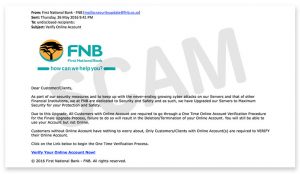With schools closed for the foreseeable future, the coronavirus pandemic has brought schools into our homes. The bedroom, study, lounge, and even the backyard have been transformed into a place where learning can take place. During these unprecedented times, parents and children are figuring out how to juggle working from home as well as full-time homeschooling from within the confines of the home and it certainly has not been easy. From schedule clashes to figuring out online, remote learning, it’s a challenge of note.
Many schools with the resources to do so have taken to using online learning tools to keep children on top of their school work. But, as online learning becomes more prevalent and children become more active online, there are risks involved. Cyberbullying, hacking, phishing, credential theft, are all risks that come hand-in-hand with any online activity. Luckily, helping your kids stay safe online doesn’t have to be a daunting task. Yes, of course, it’s important to have systems in place to protect your kids and your online life, but doing so is easier than you think.
Follow these steps to stay secure and safe while online:
Educate yourself

Staying safe online is as easy as spending an evening educating yourself about the risks of online security and how to spot a security threat.
For example; Sometimes cybercriminals will send you fake links to well-known virtual conferencing platforms, online banking platforms, and many other websites of authority. Once you click on the link you will redirected to a fake website that looks remarkably similar to the real website and be asked to sign in. This is a form of phishing that results in stolen credentials such as passwords and login names that can be used to hack into your accounts – especially if you use the same password for multiple sites.

Hovering over the link in the email or message is the easiest way to see if it’s legitimate. Before clicking the link, hover your mouse over the link and see if the hyperlinked target URL of the website is the same as the website described in the email text. Most browsers show you the target of the link somewhere near the bottom of the window. If the text says you’re being redirected to FNB.co.za but the target URL is something more like FNBbank.com, then it’s not wise to click on the link.
The most important security risks you and your children need to know about are: phishing, cyberbullying, hacking, and malware. Spend some time researching these top priority security issues and then educate your children on the risks and how to spot security issues online.
Find the best prices on computer and technology essentials for working and learning from home, online with PriceCheck now:
Get Digitally Savvy

Look after your digital identity. Your password is the last, great defence between your information and the cybercriminal. Do you really want to risk your money, information, child’s information and identity by using a flimsy password? Many people do.
To ensure you and your child stay safe when using online websites and resources, ensure you use a strong password that consists of up to 12 letters and symbols. Try using a phrase or a line of a song and then don’t use it across multiple accounts. One password per account. To make this easier, invest in a reliable password manager that will help you create and manage your logins. Then you only have to memorise one really strong password, and the password manager takes care of remembering all your other passwords.
Use multi-factor authentication

For added security when logging into websites use multi-factor authentication tools wherever possible. This is combining your password with an additional security step, such as a one-time password app on your phone. Most sites such as Gmail, Facebook, and Instagram support this. You may think that younger kids won’t really understand this, but children are remarkably resilient and capable. If you can instil strong security skills into your kids at a young age, you’ll have set them up for a secure life. Show them how multi-factor authentication works, use it yourself and apply it wherever you can.
Set up parental controls

Parental controls on home devices like your computers, mobile phones and tablets, as well as gaming consoles help parents protect children from inappropriate content, such as pornography or other adult content. Parental controls can also be set on Google, YouTube and enforced via dedicated apps that allow parents to monitor activity, ensure children access only age-appropriate content and set usage times.
Create an online contract for the family

It’s often difficult for kids to share things that have happened to them online. It’s equally difficult for parents to keep track of everything their children are doing online. To combat this, create a digital contract that allows you to build trust and openly share concerns with your child. This contract could include information like:
• Never meet anyone you met online in real life (IRL) without parental permission.
• Don’t share anything online that you wouldn’t share with your mother or grandmother.
• Talk about anything that happens that makes you feel uncomfortable, you are safe.
• The Dos and Don’ts of online security and etiquette.
• The signs of cyberbullying.
• The rules of online behaviour.
• No go zones (dark web, torrent sites etc).
• The risks of navigating cyberspace and how to protect against them.
If you work together to create and stick to a digital contract, then you’re building trust and a safety net for one another. Let the kids choose the rules too – they often know things parents don’t – and make cybersecurity a part of your everyday life.
Find the best prices on computer and technology essentials for working and learning from home, online with PriceCheck now:





